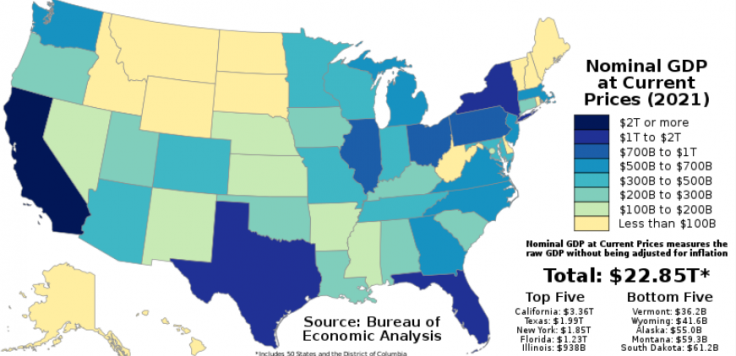The US economy expanded in the third quarter, marking the first quarterly growth in the year. Two straight quarters of negative growth had triggered fears that the world's biggest economy would slip into a recession.
However, the latest data showed that gross domestic product increased at an annual rate of 2.6 percent in the quarter ended September period. The Commerce Department data also showed that US exports remained robust thanks to a boost in industrial supplies and materials.

Respite for Biden
The latest numbers will offer some respite to the Biden administration, which is facing crucial mid-term elections in November. With households suffering from high inflation in the wake of the financial upheaval caused by the COVID-19 lockdowns and the Russian invasion of Ukraine, the mood had dampened considerably, risking electoral success of the ruling party.
Households have been reeling from decades-high inflation this year, with prices soaring on supply chain snarls due to COVID-19 lockdowns and fallout from Russia's invasion of Ukraine, which sent food and energy costs rocketing.
Better than Expectations
The US economy had declined as much as 1.6 percent and 0.6 percent in the first and second quarters of the year. Brokerages, investment banks and leading financial experts had warned that the US economy was on road to a recession, leaving a huge impact on the rest of the world.
The expansion in the latest quarter was bigger than the analyst estimates, according to Reuters. A survey of analysts by the agency had shown that economists had forecast GDP growth rebounding 2.4 percent. The actual results exceeded the expectations.

Impact on Fed Rate Decision
Analysts, however, estimate that the latest numbers will not have a significant impact on the Federal Reserve's rate hike commitment. The Fed is due to announce another rate hike in the first week of November, following the meeting of its rate setting committee.
The FOMC will rather watch closely the personal consumption expenditures price data for September and the third quarter labor cost numbers. These data sets are due to be released on Friday.
Demand Slowing
One of the notable takeaways from the GDP data is that though the economy expanded in the third quarter, consumer demand was slowing. Consumer spending accounts for more than two-thirds of the US economy. The growth in this segment slowed to 1.4 percent, down from 2.0 percent in the April-June quarter, according to Reuters.
The GDP decline in the first two quarters was attributed to a decrease in exports, drop in federal government spending and private inventory investment, as well as a decrease in state and local government spending.

Earlier in June, the World Bank last week lowered the rate of economic growth in the United States. It said it downgraded 2022 growth to 2.6 percent from 3.8 percent projected earlier. The bank said the Russian invasion of Ukraine has heightened the chances of stagflation and the threat for the US real and present.








